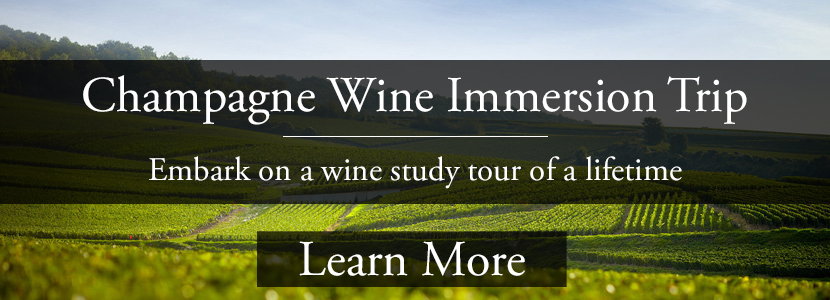BLOG
The Diversity of Champagne Houses, Growers, and Coopératives
Cathy Dangler
Wine Education & Careers
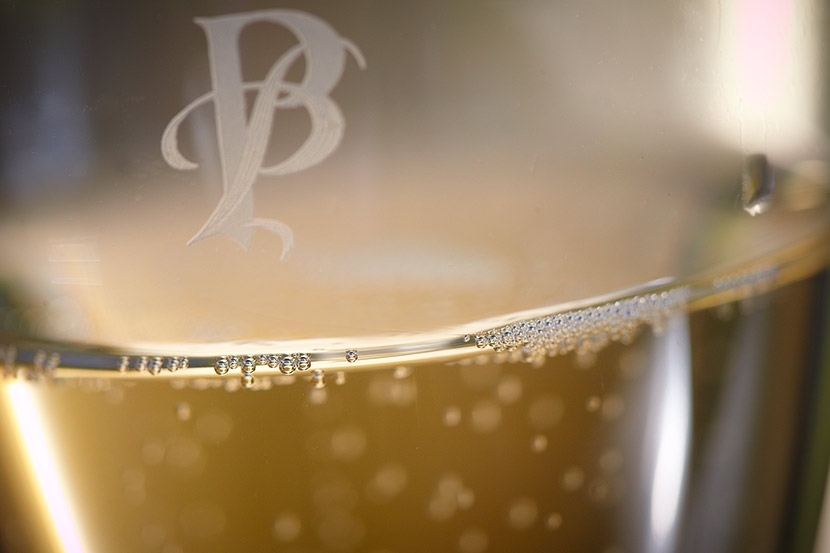
Autumn in Champagne is a spectacular time to explore the region. The countryside and vineyards are abounding in rich palettes of color and the intoxicating fall fragrance instills a unique sensorial experience. Champagne is like laughter as it fills my senses with joy, especially when the cork pops and the bubbles burst with song!
The educational experience created by the Wine Scholar Guild is a first class escapade! The inception of our tour and taste of Champagne, guided by Master of Wine, Essi Avellan, brought us full circle through the entire region with a sprinkling of the styles between Houses, Growers and Coopératives. Our adventure began with an introduction to the infamous Champagne Houses of Ruinart and Roederer.
Ruinart is best known for their unique shaped bottles, aromatic freshness, and full-bodied elegant champagnes. They are the oldest of the champagne houses (since 1729) and their signature boasts elegant and distinctive flavors, with the character that embodies the Montagne de Reims.
This was a truly memorable visit and an intriguing introduction to the Crayères of Champagne. As we descended the stairways that brought us 40 meters (130 feet) to the underground cellars, we were chilled by the cool chalk tunnels and in awe at the beauty and mystery of our surroundings.
It was an exhilarating experience as we meandered throughout the location that ages the Ruinart wines in bottle.
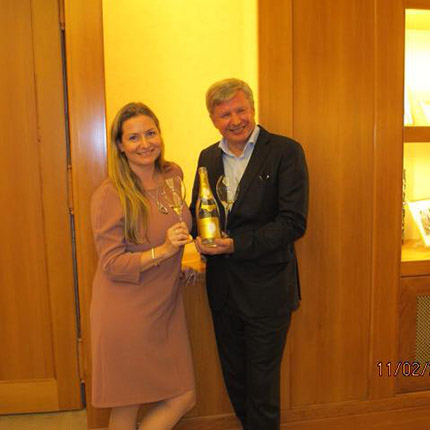
At Champagnes Roederer with Chef de Cave Jean-Baptiste Lecaillon and Essi Avellan MW
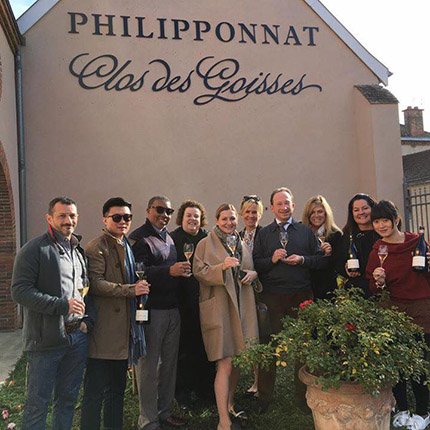
At Champagne Philipponnat with Charles Philipponnat
Our next house visit was to Champagnes Roederer with Chef de Cave Jean-Baptiste Lecaillon who provided a wealth of knowledge as we toured and tasted with this master. His passion for the wines and the region were heartfelt and generous. Roederer is one of the last family run champagne houses. Jean-Baptiste impressed upon us the unique link between the vines and those who work in the vineyards and how they devote their expertise and energy into the vines. We could feel and taste the passion, which announced itself in the bottle. At Roederer, they boast three men and three women enologists. They prefer the diversity of energy and rationale that is provided by each gender. Their collective pursuit is for balance, and they enjoy the freedom to make their wines without a recipe, and only their senses to guide them. Jean-Baptiste served up an ultimate taste experience, sharing the 2009 vintages of Brut Nature and Cristal as the finale!
There are approximately 350 houses and the majority source their grapes from the 15,000 growers. Champagne has some of the most expensive land in the world and also produces some of the most distinctive wines. The average temperature is 50 Fahrenheit and sun is scarce. The soil is rich in limestone, chalk and marl. It is truly a unique wine region.
Champagne might have been the generic term for all sparkling wine however, in 1882 the Union of Champagne Houses was formed to protect the name, and a law was created to reserve the term "Champagne" exclusively for the wines that come from the region. There are five wine producing districts, which are Aube, Côte des Blancs, Côte de Sézanne, Montagne de Reims, and Vallée de la Marne. The Champagne houses account for over two thirds of all Champagne made and export approximately ninety percent of this market.
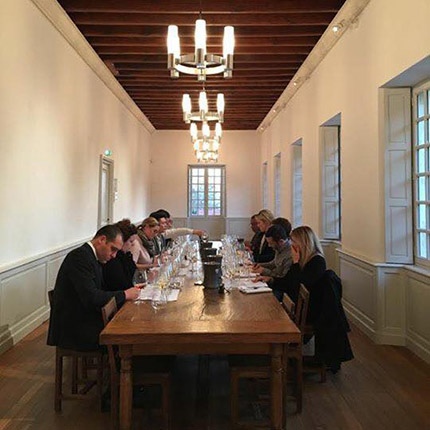
At Champagnes Dom Perignon
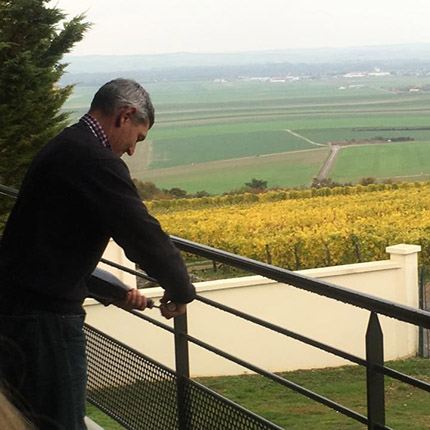
At Champagne Emmanuel Lassaigne
Each of the big-brand houses flaunts special talents in crafting their unique style cuvees. The wines are blended and the grapes are specifically selected to personalize and contribute to the style of the brand.
I was not aware that the bulk of the grapes purchased by the champagne houses are supplied by independent growers, most of which are under long-term contracts. Some of the houses purchase grapes from hundreds of different vineyards and very few, own their own. Dom Pérignon is one that owns many of their vineyards. We had the distinct pleasure of a private tour and tasting orchestrated by Vincent Chaperon who oversees wine growing, developing, and aging of the Dom Pérignon wines. He escorted us through the history of his twelve years of wine experience in Champagne and selected an exceptional vertical of 2002 through 2006 wines for our tasting pleasure. More than two vintage years in a row are rare. Therefore, our tasting of five vintages produced in a row was historic!
The afternoon spent at Dom Pérignon was true to their vision of “creating a moment you will never forget”!
We had an extraordinary introduction to the world of Grower Champagnes. The majority of Grower Champagne fruit comes from one vineyard and therefore showcases its most intangible attribute, which is the terroir. Grower Champagne has risen dramatically in popularity and I feel fortunate to have had an up close and authentic experience of place, verses the consistency driven wines produced by the big houses. Our Wine Scholar Guild Class was fortunate to experience the hospitality from Club Tresors de Champagne founder Angéline Templier J. Lassalle. The J. Lassalle team is comprised of three generations of women (grandmother, mother and daughter) whose wines revolve around family and terroir. Angéline (the daughter) created the Club Tresors concept and designed the club that showcases approximately 200 Grower Champagnes. Of course, we were treated to the J. Lassalle, and additionally the Champagnes of Pierre Gimonnet, Paul Bara and Moussé Fils Rosé. Club Tresors is uniquely appointed with cement flooring hand-painted with regional map, lamp-lit champagne bottles hanging from the ceiling, private rooms, cozy lounge areas and exquisite décor which clearly reflects the charm of the J. Lassalle family. It is conveniently located in the City Centre of Reims.
The concept of the Champagne Coopérative created a synchronicity in the region, which characterizes the art of working together. There are approximately 136 Coopératives in the Champagne region. Our visit to the Union Champagne Coopérative was an enlightening experience as we toured this enormous facility. There are over 2000 members and the concept created provides a cost effective process for production. The winemaking at Union Champagne Coopérative focuses on grand cru and premier cru. The organization was established to assist with management and oversees the common interests of both growers and Champagne Houses. The coopérative lends itself to a harmonious situation and promotes prosperity in the champagne region. It provides a viable economic partnership between the growers and houses. What an impressive and efficient operation!
As you enjoy your own tasting experiences of the various selections that the champagne region has to offer, please look for the following notation on the back labels of the bottle to decipher whether the bottle is from a House,
Grower, or Coopérative. A Champagne House that purchases grapes for production of Champagne is communicated by the notation NM and that stands for Négociant Manipulant. A Grower that makes Champagne from their estate grown grapes is noted by RM meaning Récoltant Manipulant. And last but not least, Champagne that has been made by a Coopérative, is noted CM, as in Coopérative Manipulant. It is a fun fact to search while selecting, purchasing and sipping on Champagne.
The only thing that really matters is that you are enjoying the glass in hand. Cheers, to the Pop, the Moussé, the Bubbles and the Song!
Embark on a wine study tour of a lifetime with Essi Avellan Master of Wine in Champagne

